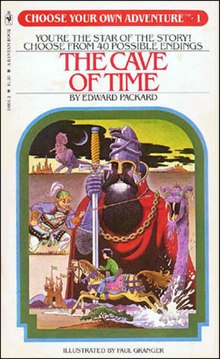During the course of my class, Telling Story in a Digital Format, I have been subjected to the horror that is an interactive script. Half of the problem for me lines in the script part of this assignment. I hate scripts but for any media related task for broadcast you need to have a script. the other half of this problem deals with the interactive portion of the script. The IF/THEN moments that allowed the story to be interactive and more tailored to suit a variety of audiences. This combined was my hell and this post is the culmination of my three and half weeks in said hell.
Interactive media give the audience a variety of choice when they pick up a product, however this practice is hard on the writer, especially when said writer is unable to organize themselves properly. I am one of those authors. My project was a ten page horror themed script, complete with five IF/THEN moments and various twists.
During the outlining phase this seemed quite easy. Write four short stories instead one? Ok but in practice it was horrible. I found the IF/THEN moments kicked my ass harder than harder than the Canadians kicked the American's asses in the war of 1812. It was brutal and actually lead to me leaving my home late at night to escape the insanity that is an interactive script. (Note: Don't do this it is, you can be kidnapped without anyone knowing)
Of course all of this was just the script, there were the character maps we had to fill out as well as the story maps. Never again...
At the end of this assignment my teacher posed the question, "Would I do it again if offered a $100,000?" My answer:
NOPE
Showing posts with label story telling. Show all posts
Showing posts with label story telling. Show all posts
Sunday, 9 December 2012
Tuesday, 9 October 2012
Interactive Media
Media as we know it is changing. whether this is for the better I cannot say. I can say that, when you compare today's media to that produced fifty or more years ago you can see a remarkable difference in the way it is packaged and sold.
Today more digital media is sold, allowing a more flexible presentation of content. While the stories follow the familiar movement of Freytag's triangle -having a beginning, middle and an end- it strays off a bit by allowing heavy user interactions. That is, it allows users to chose how they want to view the media as well how much and in what order. This form of choosing does exist in the traditional form of publishing as well but mostly allows for one possible outcome.
The first of these to come out were text based RPGs and choose your own adventure books. They changed how people thought of producing content and even the way the creators interacted with their followers. with each book or game made creators provided the raw content needed for users who can pick and choose what is best for them or even re-invent more ways to enjoy the content stretching the enjoyment out from hours to days or even weeks.
While maybe books, games and movies are still published in the traditional style there is a growing niche market for media that incorporates multiple plot lines.
Today more digital media is sold, allowing a more flexible presentation of content. While the stories follow the familiar movement of Freytag's triangle -having a beginning, middle and an end- it strays off a bit by allowing heavy user interactions. That is, it allows users to chose how they want to view the media as well how much and in what order. This form of choosing does exist in the traditional form of publishing as well but mostly allows for one possible outcome.
The first of these to come out were text based RPGs and choose your own adventure books. They changed how people thought of producing content and even the way the creators interacted with their followers. with each book or game made creators provided the raw content needed for users who can pick and choose what is best for them or even re-invent more ways to enjoy the content stretching the enjoyment out from hours to days or even weeks.
While maybe books, games and movies are still published in the traditional style there is a growing niche market for media that incorporates multiple plot lines.
Telling Stories in the New Millennium
At the turn of the new millennium stories began going digital. Anyone with a camera and some free time wanted to have their shot at fifteen minutes of fame. To this end everyone was running around making indie movies and trying to hit it big with very few success stories and lots of movies that would never see a large enough audience to give investors the confidence they needed to support up and coming artists.
This is how Youtube began. With Youtube's birth, many up and coming directors, producers, actors and singers could have their shot at making it big and being discovered but it also opened the door for more hobbits movie makers, re-inventing the way we see digital stories.
The usual format for a digital story is beginning, middle and end, this introduces the audience to the topic, builds suspense and resolves any problems formed during the timeline. With youtube videos there is no need for an introduction as the audience can see the creator and interact with him/her by leaving comments or even posting response videos.
The story doesn't even have to end and can continue for as long as the user posts videos.
This is how Youtube began. With Youtube's birth, many up and coming directors, producers, actors and singers could have their shot at making it big and being discovered but it also opened the door for more hobbits movie makers, re-inventing the way we see digital stories.
The usual format for a digital story is beginning, middle and end, this introduces the audience to the topic, builds suspense and resolves any problems formed during the timeline. With youtube videos there is no need for an introduction as the audience can see the creator and interact with him/her by leaving comments or even posting response videos.
The story doesn't even have to end and can continue for as long as the user posts videos.
Subscribe to:
Posts (Atom)


